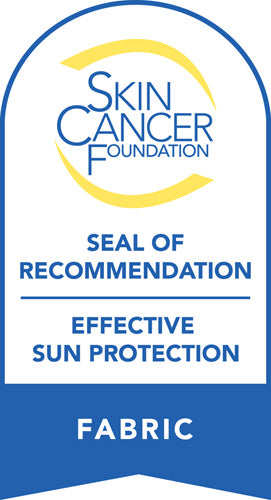BPA in Active Clothes
If you're like most people, you know of BPA as an unwanted chemical to avoid. Bisphenol A, or BPA, has long gotten a bad rap for leaching into the containers we use to eat and drink, including water bottles and canned food.
However, there's another concern you should keep in mind: BPA in clothing.
When you pull on your favorite sports bra and leggings for outdoor yoga, there's a chance you're inviting this unwanted chemical into your system. Worse, it's not always easy to tell when BPA is a component of your clothes.
Let's take a quick look at the basics of BPA, why you should be concerned, and what you can do to protect your health.
What Is BPA?
BPA is an industrial chemical. It appears in various types of plastics and resins. As mentioned above, it's common in the polycarbonate plastics we use as containers for food and drinks.
We've been using BPA to produce plastics and other materials since the 1960s. We also use it in things like cans, toiletries, electronics, and even dental sealants. However, it's only in recent years that we've become aware of the dangers of BPA.
BPA can leach out of plastic and into things around it. The longer the contact, the higher the chances of transference. As you can probably guess, this isn't great for the foods and beverages we consume, especially for things we store long-term in BPA-laced containers.
This leaching is more likely to occur when heat is involved. When you put a plastic container in the microwave, for example, it's more likely to cause BPA to leach into the food or drink inside it.
Why Is BPA a Health Concern?
BPA is a hormone disruptor. This means that it imitates the natural hormones our bodies produce. Specifically, BPA mimics the function and structure of estrogen.
This allows BPA to influence our body in the same way estrogen does. Our bodies use estrogen to regulate growth, reproduction, energy levels, and more. In addition to estrogen receptors, BPA can also sometimes link with other hormone receptors in the body.
Studies correlate high levels of BPA with heart disease, diabetes, breast cancer, and prostate cancer. Frequent exposure to BPA may also impact fertility or lead to birth defects.
Researchers continue to find high levels of BPA in human sweat and urine. One study found that the amount of BPA in the average human body may be up to 44 times greater than previously thought.
Why Does That Matter for Clothing?
If BPA is a component of plastics and resin, why should you be worried about finding it in your clothes?
Today's clothing uses millions of tons of plastic, which gets woven into textile fibers. Polyester, nylon, and acrylic are all common names for synthetic fabrics that use plastic. Brands may choose to add BPA to reduce static, enhance a material's stretch, or increase a fabric's lifespan.
Not only does this plastic cause microfiber pollution that harms the environment, but it can also impact our health. BPA and other toxic chemicals should be a concern for anyone wearing clothing made of synthetic materials. BPA can leach through the skin and into the bloodstream via absorption, especially with frequent wear.
Research suggests that toxic chemicals may be more common with fast fashion clothing brands. However, in recent months, several activewear brands made the news for their inclusion of BPA-laced plastics in their clothing.
Researchers at the Center for Environmental Health (CEH) found high amounts of BPA in various types of the brands' workout clothes. Testing revealed that BPA levels were up to 22 times the safe limit according to California law.
CEH, a consumer advocacy group, sent legal notices to these brands to raise awareness and pressure them into changing their practices. However, this may not ease the minds of all consumers. After all, how can we figure out which brands and products we can trust with our health?
Minimizing Exposure to BPA in Clothing
While BPA is common in clothes, there are plenty of things you can do to minimize your exposure to it. Here are a few tactics worth trying:
Wear Less Plastic
The easiest way to be sure that you won't have to worry about BPA exposure is to wear less plastic. Avoiding synthetic textiles like nylon and polyester means you won't have BPA in your clothes.
Instead, choose natural fibers like cotton and wool. Depending on where you shop, clothing with natural fibers may be more expensive. However, they may be better for your peace of mind, your health, and the environment as a whole.
Find BPA-Free Clothing
You're more likely to find BPA in cheap clothing from fast fashion brands, but these clothes aren't your only option. Clothing made from synthetic textiles doesn't have to include BPA.
More and more manufacturers are creating BPA-free products. When shopping, look for indications that an item doesn't contain BPA. Most brands will display this information upfront as a selling point now that consumers are more likely to look for it.
Change Your Clothes After a Workout
What about your favorite leggings, sports bra, and workout clothes? Is it time to toss all of them out?
Not all synthetic fibers include BPA, making this a tough choice. In addition, BPA is all around us, from shop receipts to pizza boxes. Sending a few articles of clothing to a landfill won't change that.
If you're suspicious of your favorite clothes with synthetic textiles, change out of them after a workout. BPA is more likely to transfer to your skin in a warm, sweaty environment, so don't sit in your workout gear when you're done.
If you truly can't imagine wearing synthetics again, be sure to recycle or reuse them instead of throwing them in the trash!
Buy Better Clothes
At the end of the day, your clothes should protect you without hurting your health. Avoiding BPA in clothing can be tricky, but it's not as difficult as you might think. With more brands than ever investing in BPA-free fabrics, a bit of research can help you find clothes you'll love without risking your health.
For a protective textile you can trust, check out our BloqTek™ fabric. Sun-protective, Pb-free, and free of toxins like BPA and BPS, our products protect your skin from harmful UV rays without adverse effects. Shop on our site for your new favorite clothes today!



